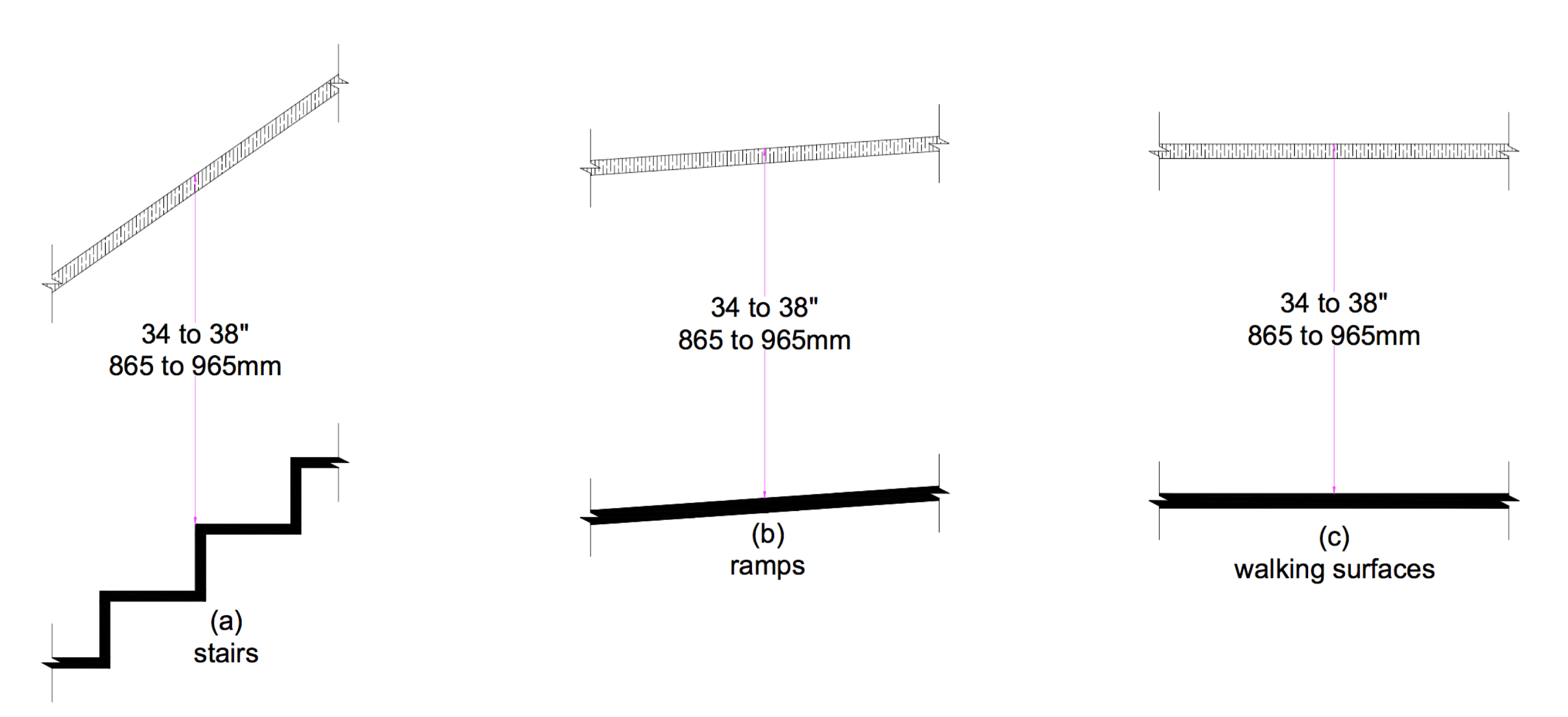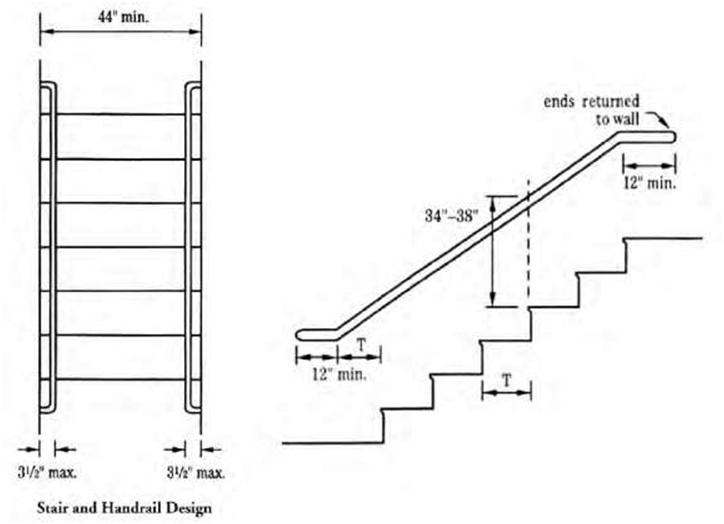Ada handrails with a non circular cross section should have a perimeter dimension between 4 and 6 25 with a maximum cross section dimension of 2 25.
Ada stair handrail requirements.
Handrails are not required on walking surfaces with running slopes less than 1 20.
They are required on both sides of stairs and ramps.
Ada mandates that handrails with a circular cross section must be 1 1 4 inches minimum and 2 inches maximum on the outside diameter and must follow ada graspibility requirements.
Ada standards guidelines recommendations areas of consideration when you are constructing an ada compliant handrail.
Where children are the primary users of a facility the ada recommends a second handrail for children.
If you choose to place a handrail in another area such as a corridor it must meet the handrail requirements.
Ada handrail clearance requirements gripping surface.
Height from surface 34 38.
A handrail is required on stairs with two or more risers and ada ramps with a rise of 6 inches.
Also the adaag states that handrails shall not rotate within their fittings handrails must extend beyond stair and ramp runs.
The requirements for stair and ramp handrails in this document are for adults.
Non circular cross sections are required to have a minimum perimeter of 4 inches with a corresponding maximum of 6 1 4 inches.
Any attachments to the wall should occur 1 in 38 mm minimum below the bottom of the handrail gripping surface so that people can firmly grasp onto the handrail.
The ada s handrail requirements are found in section 505 of the 2010 standards chapter 5.
The cross section dimension must be 2 1 4 inches maximum.
A maximum height of 28 inches 710 mm measured to the top of the gripping surface from the ramp surface or stair nosing is recommended for handrails designed for children.
Non circular cross section details.
A minimum 12 inch 305 mm horizontal extension is required at each top riser indicated in the.
The inside handrail on switchback or dogleg stairs shall always be continuous.
According to section 505 1 handrails are required along ramps on accessible routes with a rise greater than 6 inches and stairways when newly constructed or if handrails are removed and replaced as part of an alteration.
Your handrail cannot be obstructed along the tops or the sides.
Handrails are required on both sides of stairs and ramps.
The bottoms of handrail gripping surfaces can be partially obstructed by attachments to the wall but not for more than 20 of their length.
This handrail would have a maximum height of 28 inches with a minimum 9 inches of clearance between the child s rail and the adult handrail.
General site and building elements.
Sufficient vertical clearance between upper and.
When children are the principal users in a building or facility e g elementary schools a second set of handrails at an appropriate height can assist them and aid in preventing accidents.
1 handrails shall be continuous along both sides of stairs.
Handrails shall comply with 4 26 and shall have the following features.
They are placed between 34 inches and 38 inches above the leading edge of a stair tread the ramp surface or the walking surface.
Handrails shall be at a consistent height above walking surfaces stair nosings and ramp surfaces.
Extend past the length of the ramp and or stairs.
Seniors and people with disabilities may benefit from handrails that.




























